Arrow Lake is a big change for Intel. One of the biggest we've seen in a long time. The coming generation of both desktop and mobile processors will deliver "significantly lower power levels" than previous ones—up to 30%—and in doing so might see gaming performance gains mellow out entirely.
First off, you'll find the desktop chips under the 'Intel Core Ultra 200S' branding, also known as Arrow Lake S, from October 24. I've dropped the specifications for the series in a table below with all the names, but effectively this means you want to look out for the Ultra 9 285K, Ultra 7 265K or Ultra 5 245K on the shelves.
The reason Arrow Lake is a big shake-up is that it's effectively Intel betting on its mobile architectures working well on the desktop. Arrow Lake shares many similarities to the latest Core Ultra 200V-series, including sharing Lion Cove and Skymont architectures, though it's closely related to the first-generation Core Ultra 'Meteor Lake' chips in many other ways.
Core Ultra 200S specifications
Arrow Lake is a tiled processor, and the first time we've seen such an approach to building a processor for the desktop—from Intel, that is. AMD has been using chiplets on the desktop for a long while now.
Nevertheless, Arrow Lake takes a pretty novel approach for its construction. Intel is using its Foveros 3D chip packaging technology to effectively load what's known as a 'base tile' with various chipsets, including a GPU tile, SOC tile, IO tile, Compute tile, and filler tile.
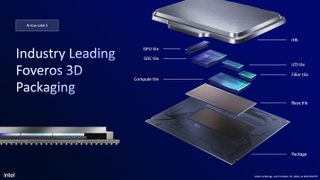
That's pretty similar to the approach taking with Meteor Lake, and in some ways Lunar Lake. Though Lunar Lake is more sparing in its use of chips than Arrow or Meteor.
We know already that Intel is ditching its own 20A process node for Arrow Lake, instead opting to pay TSMC a tidy fee for use of its fab-ulous nodes. That's not a great sign for Intel, though it's not a bad thing for us gamers. Lunar Lake appears to have benefited majorly from using TSMC's nodes for the most important chips.
Swipe to scroll horizontally
| Core count (P+E) | 24 (8+16) | 20 (8+12) | 20 (8+12) | 14 (6+8) | 14 (6+8) |
| Threads | 24 | 20 | 20 | 14 | 14 |
| Max P-core Thermal Velocity Boost (GHz) | 5.7 | 5.5 | 5.5 | 5.2 | 5.2 |
| Max P-core Turbo 3.0 clock (GHz) | 5.6 | 5.5 | 5.5 | 5.2 | 5.2 |
| P-core Base clock (GHz) | 3.7 | 3.9 | 3.9 | 4.2 | 4.2 |
| E-core Boost clock (GHz) | 4.6 | 4.6 | 4.6 | 4.6 | 4.6 |
| E-core Base clock (GHz) | 3.2 | 3.3 | 3.3 | 3.6 | 3.6 |
| L3 cache (MB) | 36 | 30 | 30 | 24 | 24 |
| L2 cache (MB) | 40 | 36 | 36 | 26 | 26 |
| Xe-cores (iGPU) | 4 | 4 | 0 (N/A) | 4 | 0 (N/A) |
| GPU Max clock (GHz) | 2 | 2 | N/A | 1.9 | N/A |
| NPU Peak TOPS | 13 | 13 | 13 | 13 | 13 |
| CPU PCIe lanes | 24 | 24 | 24 | 24 | 24 |
| Max rated RAM speed | DDR5-6400 | DDR5-6400 | DDR5-6400 | DDR5-6400 | DDR5-6400 |
| Processor Base Power (watts) | 125 | 125 | 125 | 125 | 125 |
| Max Turbo Power (watts) | 250 | 250 | 250 | 159 | 159 |
| Price (suggested) | $589 | $394 | $379 | $309 | $294 |
As you can see in the table above, Arrow Lake offers up to eight P-cores and 16 E-cores—Lion Cove and Skymont architectures, respectively. We've already seen both core designs in action within Lunar Lake, which has shown strong single-thread performance in tests and surprisingly decent multithreaded performance considering its lack of threads, but how will that translate into the big leagues?

Intel touts a 9% IPC improvement with the Lion Cove P-cores over Raptor Cove—the core architecture in the current 14th Gen chips.
Greg Boots, platform marketing manager at Intel, says Lion Cove is all about "high performance at lower power."
For the E-cores, its new Skymont cores will deliver an extra 32% IPC with integer operations, or up to a whopping 72% gain with floating point operations. We don't usually see IPC split up in this way, as integer vs. floating point performance can vary quite a bit depending on what sort of work the CPU is chomping on, but both offer pretty significant gains.
The E-core performance will be key to Arrow Lake's success as a desktop gaming chip—more so than previous generations. The reason being that Intel has removed the ability to split each core into two threads on Arrow Lake—known as Hyper-Threading on Intel's chips.

It's a gamble for Intel to ditch Hyper-Threading. On the one hand, it lowers the number of threads available from the P-cores for multithreaded workloads, of which there is an ever increasing number, and we've seen with Lunar Lake that this can have a big effect on multithreaded test scores, even with those E-cores working harder than ever. Games are starting to make better use of threads with newer engines, such as UE5. However, Intel doesn't expect that to be a problem.
I can see why it's not necessarily a problem. At least at the high-end. The top Core Ultra 9 285K comes with 24 threads total even without Hyper-Threading. That's as many threads as the Ryzen 9 9900X. Though when you get down to the Core Ultra 5, there are obviously fewer. Next year we'll likely see more affordable chips in the line-up, and thread counts could be even lower still.
At a Lunar Lake event ahead of the launch in September, when I was offered a glimpse at the future Arrow Lake architecture for the first time, Intel said it expected the new and improved E-cores to take up the burden of multithreaded performance.
In the words of Greg Boots: "The E-cores are real cores," so they don't need the helping hand of Hyper-Threading.
We'll see how that pans out in testing, though speaking to Intel's Damien Triolet he was also confident that games may benefit from the simplicity of one thread, one core. In some cases splitting individual cores with multiple threads have caused a bit of drag on gaming performance, though only ever by a small amount.
For the PCIe slots, there are 20 PCIe 5.0 lanes from the CPU, with another 24 PCIe 4.0 slots coming from the new 800-series chipset. That's 48 PCIe lanes in total.
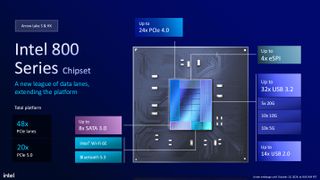
Arrow Lake S also offers native Wi-Fi 6E and Bluetooth 5.3.
Lastly, Intel has confirmed that Arrow Lake won't suffer from the instability issue that hit the 14th Gen, and has a smaller package size by 33%, which should make for a less, er, bendable CPU. I'd be pretty happy to see the back of bent CPUs and washer installations, to be honest, and it feels like this is prime moment for Intel to address these issues at their root.
Core Ultra 200S performance

We'll also see some regression in gaming performance.
Intel cites an aim to "maintain" performance between 14th Gen and the new 200S Series. Intel calls it performance parity with Raptor Lake in slides provided to me ahead of time, but we'll also see some regression in gaming performance, depending on the game.
In F1 24, the Ultra 9 285K falls short of the Core i9 14900K by 7%. In Red Dead Redemption 2, 4%. In Far Cry 6, it's down 13%. But it's up by as much as 13% in F1 23.
When it comes to the competition, Intel paints a similar picture. Stacked up against the Ryzen 9 9950X, the 285K is anywhere from 28% faster (with APO enabled) to 13% slower.
Altogether, it's not a very convincing picture of raw performance for the 285K.
Core Ultra 200S power efficiency

The key claim from Intel for Arrow Lake is power efficiency over performance. Up to 30% lower power, with a 58% power efficiency improvement in "lightly-threaded use cases", or up to the same performance for half the power in sustained multithreaded workloads.
Intel says that amounts to an actual power draw drop of around 73 watts while gaming compared to the 14900K, though that varies depending on the game being played.
It's "one of the largest power reductions Intel has seen in quite some time," says Boots.
If you've been wrestling with a 14th Gen processor, which has had one too many voltage issues and are known for high power draw, you might be keen to hear about a dramatic reduction in power draw. Lower power draw should mean easier chips to cool, cheaper running costs, more headroom for overclocking, and more potential for improvement with subsequent generations.
Intel claims an average of a 13 degree Celsius temperature drop while gaming at 1080p with the Ultra 9 285K compared to the 14900K.
Core Ultra 200S iGPU

The iGPU isn't a big consideration for desktop chips—the first-gen Xe iGPU loaded into the Arrow Lake S desktop chips will do just fine with four Xe-cores, though it's not included in the chips denoted 'KF', as per the previous generations.
Though Arrow Lake will also arrive as a mobile part (Arrow Lake H) and the GPU might get a bit more use in this capacity. I say a bit more, as it's still likely we'll see discrete GPUs bundled alongside Arrow Lake chips in gaming laptops, but the iGPU is there as a handy low-power backup.
We had our first glimpse of the Xe2 GPU architecture in Lunar Lake, which appears to offer some big improvements over Intel's first Xe architecture. Tough luck though, because first-gen Xe is what you're getting on Arrow Lake H—though it does come with one big improvement.
Arrow Lake H will be enhanced with extra XMX horsepower. XMX is dedicated hardware for accelerating workloads most often associated with AI. This 'Xe with XMX' GPU offers 77 TOPS from the GPU tile, whereas the iGPU in Arrow Lake S iGPU manages a measly eight. That's a huge uplift for those extra blocks, though not one I'm particularly excited about as a PC gamer. We're a fickle bunch, eh?
Unlike the desktop chips, Arrow Lake H will also offer native Wi-Fi 7 and Bluetooth 5.4. It's a bit of a shame to miss out on Wi-Fi 7 natively on the desktop chips but that's not to say we won't see motherboards integrating that newer standard anyways.
Core Ultra 200S overclocking
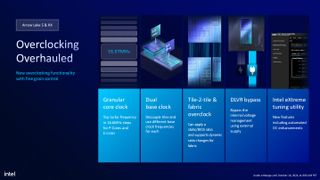
Intel has added a few improvements for the more sadistic overclockers among us, too. If you wish to push Arrow Lake to the limit and beyond, you'll be able to tweak the core clocks in increments of 16.67 MHz. More interestingly, Intel will offer dual base clocks, to decouple tiles from one another. There's also tile-2-tile and fabric overclocks and a handy switch to entirely ignore the internal voltage management on the chip—use that last one at your own risk. We know what happens when the voltage goes awry.
There's also the promise of one-click overclocking with the help of AI.
I should probably mention the AI component here too, as it's the first time Intel, or anyone else, has included an NPU on a desktop chip. An NPU is dedicated silicon for accelerating AI workloads. Though, for what it's worth, the NPU on Arrow Lake S is rather minuscule compared to current generation mobile chips at just 13 TOPS—it uses the same architecture as Meteor Lake's NPU.
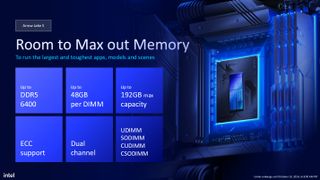
For memory, Arrow Lake S will support DDR5-6400 as standard, which means that's a guaranteed speed though you can still push your own memory further with XMP. There's support for more weird and wonderful memory formats with Arrow Lake, too, though support depends on motherboard manufacturers doing something with these.

 3 months ago
178
3 months ago
178
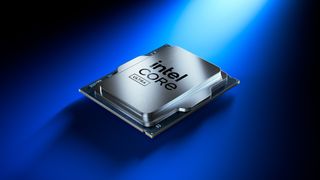







![Anime Reborn Units Tier List [RELEASE] (November 2024)](https://www.destructoid.com/wp-content/uploads/2024/11/anime-reborn-units-tier-list.jpg)
